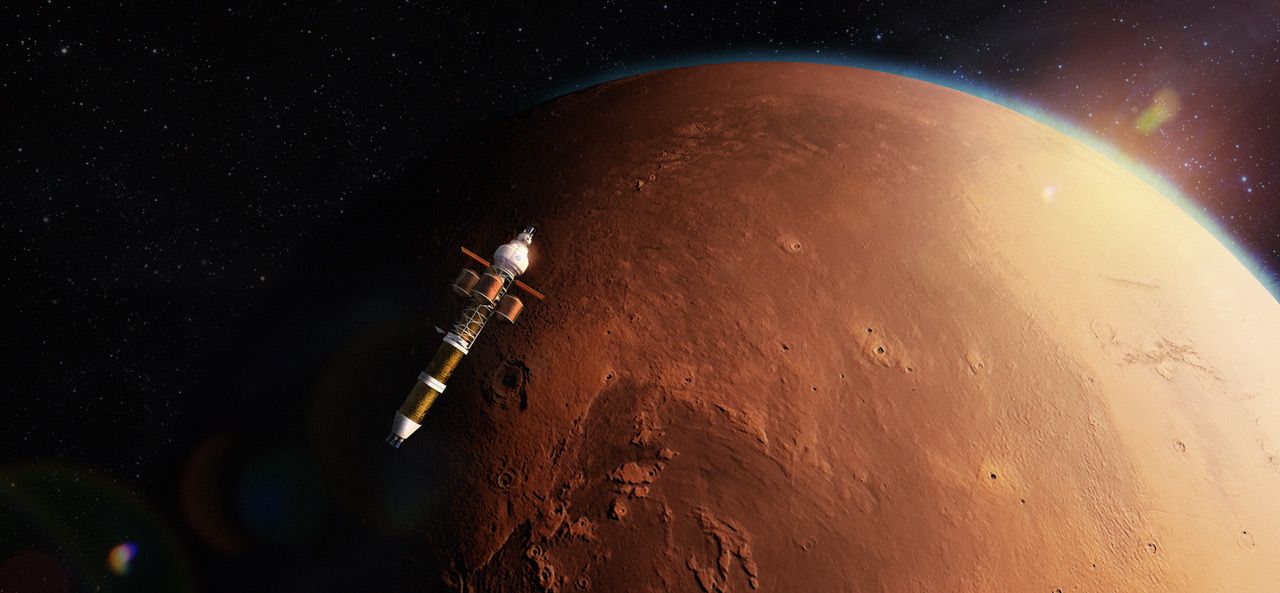
Perseverance: Powering Today’s Research For Tomorrow’s Communities On Mars With Nuclear
Today, after travelling nearly 300 million miles powered by solar panels, NASA’s Perseverance rover will set wheels on the Martian surface. After that, it will be powered exclusively by its nuclear power source. Perseverance, which NASA has dubbed its “most capable rover” ever, carries a radioisotope thermoelectric generator (RTG) that will power everything the rover does, day and night, for the entirety of its 687-day mission. With this power, Perseverance will continue the ongoing search for signs of life on Mars in the air and soil while preparing humanity for future crewed missions to Mars with key technology demonstrations.
NASA is planning to land humans on Mars sometime in the mid-to-late 2030s with others in the space community racing to do it even sooner (not including the recent drive by Starman Tesla). In parallel with those efforts, both NASA and the broader industry are working to get the first woman and next man onto the moon not just to visit, but to stay as well. Making any of these target dates a reality will take significant investment and support, a commitment to ambitious development timelines, and – ahem – perseverance. No single agency, company, or person will be able to make this happen on their own, and we will have to come together as a community of explorers to collectively take those steps towards and on the Moon and Mars. Already, alongside NASA, companies like USNC-Tech, Blue Origin, Aerojet Rocketdyne, Lunar Outpost, First Mode, BWXT, SpaceX, and countless others are aligning themselves to develop and implement the technologies needed along these timelines.
In our small part, just like the RTG powered Perseverance, my team at USNC-Tech is working to enable that community of explorers by developing and eventually providing safe and reliable power and propulsion anywhere, whether it’s in deep space, the South Pole of the Moon, or the Martian surface. Alongside a global community dedicated towards the exploration of outer space, we are contributing to that final goal of seeing humanity have a sustainable presence throughout the solar system.
I believe it’s not enough to just visit the Moon and Mars. To truly enrich our knowledge of the cosmos from the value inherent in each of these far-flung places, to make sure that our advancements in space help make lives better on Earth, we have to learn how to stay. This is where space nuclear power and propulsion (SNPP) comes in. To protect our astronauts traveling through space, we need to get them to their destinations quickly. To ensure our astronauts thrive, they'll need safe, reliable, and plentiful energy. Our astronauts will need advanced nuclear technologies capable of transporting and supporting human life to where it has never been transported or supported before. Space nuclear power propulsion can provide these and be foundation for a permanent and sustainable human presence in outer-space.
Perseverance took seven months to arrive on Mars. A crewed mission is estimated to take at least nine. With our nuclear thermal propulsion (NTP) engine and the right mission design, we can enable much shorter trip times. Once landed, our scalable and inherently safe fission surface power (SFP) system, Pylon, can provide orders of magnitude more heat and electricity for crews, settlements, and commercial operations. Through collaboration with industry partners, NASA, and others in the US Government, our breakthroughs in SNPP technologies have opened unprecedented performance capabilities, will strengthen astronaut and environmental protections through state-of-the-art safety features, and stand to dramatically reduce interplanetary travel times. As our Director of Engineering, Michael Eades, recently told CNN, “Nuclear technology will expand humanity's reach beyond low Earth orbit, and into deep space.”
NASA’s accomplishment reminds us of how quickly an idea can become a reality. Just five years ago, my team and I were just that, an idea that perhaps we could design a nuclear system that had a future in a commercial market by addressing non-proliferation concerns and thinking beyond the first mission. Today, that same idea is the basis for multiple NASA and DoD program with us at the forefront of that development. Like the rovers before Perseverance and the rovers that will come after, like the scientific Voyager and New Horizons satellites flying deeper into space with every passing second, I believe we must push ourselves at every opportunity to not merely meet, but exceed our limits as we reach higher than we have ever dared.
As excited as I am about Perseverance’s successful arrival at Mars, its mission has only just begun, and the discoveries it will make and the impact those findings will have on today’s scientists and tomorrow’s astronauts are still yet to be seen. But this thrill, made possible in large measure by nuclear power, is exactly what I, my team at USNC-Tech, and our friends across the entire space community wake up for. Hopefully, with Perseverance’s findings, our nuclear power and propulsion systems, and the ongoing work of countless others, we’ll one day wake up on Mars.
Paolo Venneri
CEO USNC-Tech